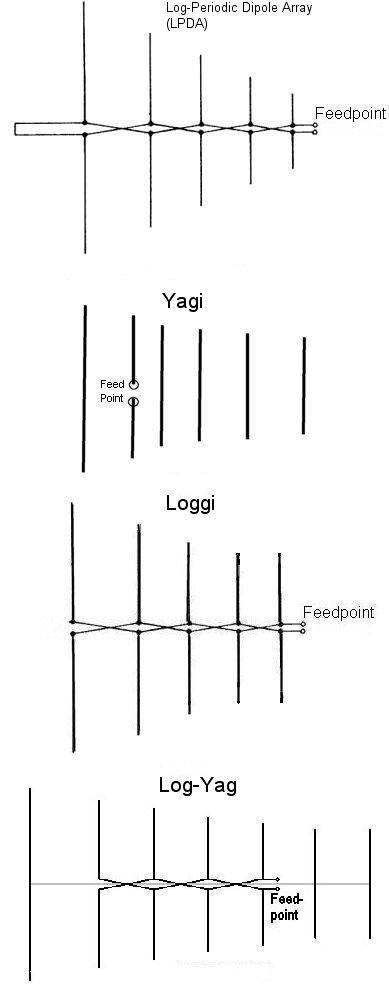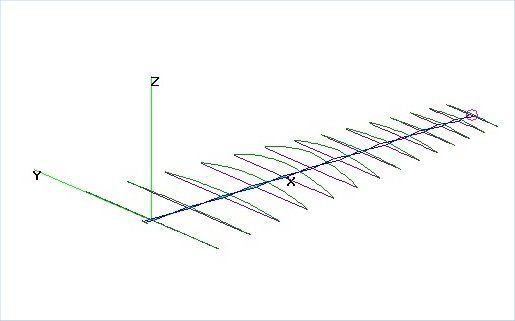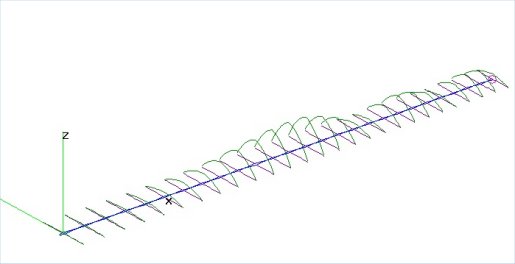
The W8IO
Antenna Site - LOGGI - a Log-Periodic / Yagi Hybrid Antenna
(updated 14 Mar 2022)
Russia
began a full-scale invasion of Ukraine on 24 February 2022, in an
escalation of the Russo-Ukrainian War that began in 2014. The invasion
is the largest conventional military attack on a sovereign state in
Europe since World War II. Since the beginning of Putin's war,
thousands of both Ukraine and Russian citizens have been killed.
Russian military have indiscriminately bombed cities in Ukraine,
destroying many hospitals and schools. Our heart goes out to the 2.7
million plus
refugees that have left Ukraine for neighboring countries, and those
who stayed to fight the Russian invaders.
Rossiya nachala polnomasshtabnoye vtorzheniye v Ukrainu 24 fevralya 2022 goda v ramkakh eskalatsii rossiysko-ukrainskoy voyny, nachavsheysya v 2014 godu. Eto vtorzheniye
yavlyayetsya krupneyshim voyennym napadeniyem s primeneniyem obychnykh vooruzheniy na suverennoye gosudarstvo v Yevrope so vremen Vtoroy mirovoy voyny. S nachala putinskoy
voyny pogibli tysyachi grazhdan Ukrainy i Rossii. Rossiyskiye voyennyye bez razbora bombili goroda Ukrainy, unichtozhiv mnozhestvo bol'nits i shkol. My sochuvstvuyem boleye
chem 2,7 millionam bezhentsev, pokinuvshikh Ukrainu v sosedniye strany, i tem, kto ostalsya srazhat'sya s rossiyskimi okkupantami.
Россия начала полномасштабное вторжение в Украину 24 февраля 2022 года в рамках эскалации российско-украинской войны, начавшейся в 2014 году. Это вторжение является крупнейшим
военным нападением с применением обычных вооружений на суверенное государство в Европе со времен Второй мировой войны. С начала путинской войны погибли тысячи граждан Украины
и России. Российские военные без разбора бомбили города Украины, уничтожив множество больниц и школ. Мы сочувствуем более чем 2,7 миллионам беженцев, покинувших Украину в
соседние страны, и тем, кто остался сражаться с российскими оккупантами.
What
is a Loggi?
Normally,
log-periodic dipole arrays (LPDA) are designed to cover a large
frequency
range, such as 14 - 30 MHz or 50 - 200 MHz. LPDA's produce
moderate forward gain, moderate F/B and low VSWR over almost all
frequencies
within the frequency range that they are designed for. LPDA's
have all elements connected to a feeder (transmission line). This
feeder has a feedpoint at the front of the array. LPDA's are designed
based on mathmatical ratios such as TAU (scale factor) and SIGMA
(spacing factor).
Yagi
beam antennas are designed to cover a very narrow frequency range,
typically 2%. Yagi beams generally cover only one Ham band at
a
time, although traps, sleeves and interlaced parasitic elements can
make multiband Yagis possible. Yagi beams can be designed to produce
extremely high forward gain and high F/B, however this will also reduce
the useable bandwidth by doing so. Yagi's are generally fed toward the
rear of the array on one particular dipole element. However, some
hybrid Yagi's such as the Hy-Gain TH11DX use a log-cell as the driven
element. These antennas are sometimes called Log-Yag antennas.
While evaluating some high-Tau LPDA designs,
I
found that I could obtain gain values within 1 dB of similar length
high performance VHF/UHF Yagis. These high-Tau designs also used a
Sigma value near optimum and produced extremely high gain and F/B and
F/R and extremely clean patterns in NEC simulations. Since the gain was
so close, I decided to inspect what parameters could be changed to
improve the gain on a specific frequency (e.g. 144.1 MHz) without
sacrificing too much F/B or F/R, or possibly improving the F/R along
with the gain. The display of current on each element suggested that
the longest 2 or 3 elements could be tweaked for slightly better F/R
without affecting the overall LPDA performance. Also many front
elements
could also be tweaked to improve gain and F/R over a narrow band.
This new design is called a Loggi. This
stands for a LOG - yaGI
hybrid. The Loggi is different from other designs called Log-Yag
antennas in that all of a Loggi's elements are driven. There are
no directors or reflectors. It is actually more of a narrowband
optimized LPDA than a real hybrid. The front driven elements in the
Loggi driven array seem to act like Yagi directors. Also, the rear
driven elements in the Loggi driven array seem to act like Yagi
reflectors.

LPDA
- Log Periodic Dipole Array:
- All elements driven, Feedpoint at front of boom
- extremely wide VSWR/Gain bandwidth
- useable for HF, VHF, UHF and higher frequency bands
- Design based strictly on ratios (Tau and Sigma)
- moderate gain, typically 3 to 6 dB below a similar sized
Yagi
- F/B and F/R low for low Tau designs (0.80 to 0.90)
- F/B and F/R high for high Tau designs (0.91 to 0.99)
- anomolous resonance creates VSWR spikes on low Tau designs
- Usually only one driven element near the rear of array
- one reflector and many director parasitic elements
- very narrow VSWR/Gain bandwidth (typically 2%)
- useable for HF, VHF, UHF and higher frequency bands
- Design can be flexible by using multiple DE's and
interlaced, trapped, sleeved parasitic elements
- moderate to high forward gain, depending upon design and
boomlength
- usually high F/B, typically 20-30 dB, multiband designs
possible by using trapped, sleeved or
LP-cell DE
Loggi beam
antenna:
- All elements driven, Feedpoint at front of boom
- element spacings based on high Tau (0.97-0.99) and optimum
Sigma (0.19-0.21)
- elements outside the chosen active region are optimized in
length
- narrow or moderate VSWR/Gain bandwidth (typically 2 to 10%)
- useable for HF, VHF, UHF and higher frequency bands
- Design can be optimized for maximum F/B-F/R or Gain or Bandwidth
- Gain can be optimized for same gain as DL6WU long boom Yagi
- Radiation pattern can be optimized for 40-60 dB
F/R or no sidelobes
Log-Yag beam antenna:
- Consists of LPDA core with one reflector behind and
multiple directors in front
- Reflector and directors may have traps, coils or sleeves
- LPDA core usually has from 3 to 5 elements
- Log-Yag usually designed to produce enhanced VSWR bandwidth
of monoband Yagi
- Log-Yag may also be designed for multiple-band operation:
Refl. helps lowest band only
Example of
element currents in normal LPDA
Example of element currents in Loggi beam
HF
Examples:
VHF and UHF
Examples:
Comments
are welcome!
contact
Roger: email to
rgcox2
(at) gmail.com
Roger Cox W8IO - Spring
Lake, MI


 LPDA
- Log Periodic Dipole Array:
LPDA
- Log Periodic Dipole Array:
